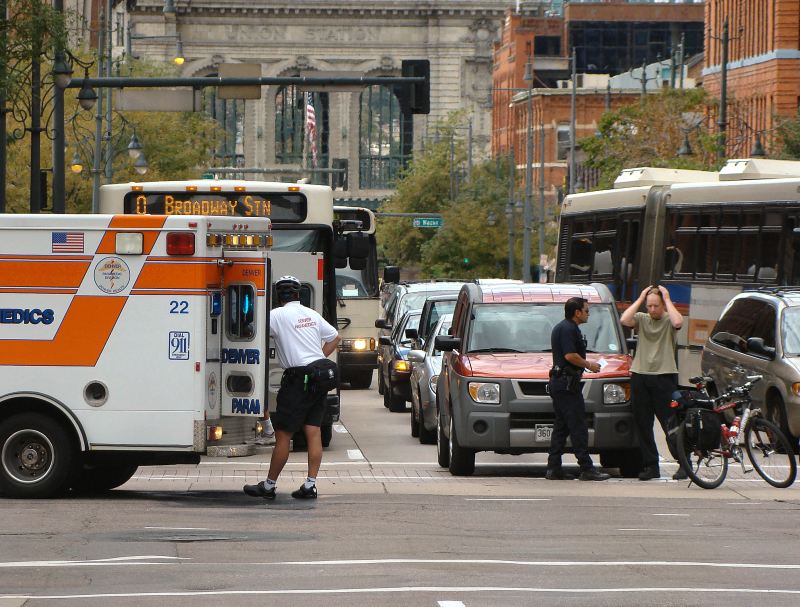Colorado Isn’t Even Trying to Reduce Traffic Deaths

Editor’s note: This is an excerpt from a Streetsblog USA story discussing several states that have planned for a growing number of deaths on their roads.
90 more people dead on Colorado’s roads.
That’s the goal officials at Colorado Department of Transportation set for themselves under a new federal program challenging them to improve. The goal-setting exercise is supposed to help make the huge bureaucracy that receives billions in federal funds every year slightly more accountable.
But the first round of goal-setting makes it clear that Colorado isn’t willing to make the substantive, structural changes to really improve safety.
In Colorado, the “goal,” meanwhile, is a 16-percent increase in traffic fatalities, rising from 554 to 644 for the five-year period ending in 2019.

Colorado isn’t even aiming to reduce fatalities when controlling for population growth and increase in driving miles. The state “targets” a 10-percent increase in its fatalities per 100 million miles driven.
At the same time the CDOT acknowledges an “aspirational goal of moving Colorado towards zero deaths” in the “long term.” But it doesn’t seem to be at all willing to make the major changes needed to bring that about.
In its statement about the numbers, CDOT blames it all on the models.
“Contributing factors were considered, including the following: population growth, increases in [vehicle miles traveled], economic growth, potential funding changes, and legislative changes,” the agency writes. “All of the models indicated future increases in fatality rates, resulting in short-term targets with an increase in the fatal rate.”
I reached out to Colorado DOT for more information.
“While we are doing the very best we can with the resources we have to improve safety, all of the factors that influence numbers of crashes are indicating increasing trends,” the agency responded. Specifically, CDOT wrote, population is increasing, driving miles are increasing, drunk driving is increasing [editor’s note: the Centennial State has legal pot], distracted driving is increasing and the agency isn’t anticipating any infusion of money for safety programs nor major legislative safety advances.
But CDOT controls a $1.4 billion annual budget. Some of the funding is restricted. But the agency could direct additional funding to safety programs if it wanted.
Policy leaders at Transportation for America say the state shows a disappointing lack of ambition in keeping its own residents alive and healthy — even more so since there is no penalty for states that fall short of their goals. They would simply have to report that.
Transportation for America noted in a recent report that 10 of the 20 states with the worst pedestrian safety records were predicting more pedestrian deaths in the future.
“The only ‘acceptable’ number of deaths on our roadways is zero, but every single state — whether seeking to marginally reduce pedestrian deaths and injuries or allow the to continue to rise unabated — established a target for ‘success’ that allows these preventable deaths to continue or even increase,” the organization wrote.
“We can and must raise the bar,” the organization said.


